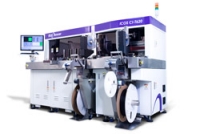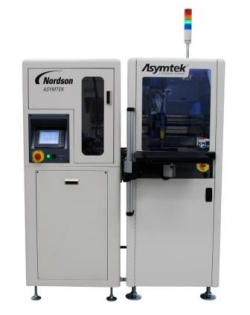March 16, 2011 — The Ontario County Local Development Corp. has awarded a $75,000 matching grant to the College of Nanoscale Science and Engineering’s (CNSE) Smart System Technology & Commercialization Center of Excellence (STC), leveraging an additional $75,000 from STC to fund a site master plan for the 57-acre high-tech campus in Canandaigua, NY.
The site master plan, which will be developed by Bergmann Associates, will assist STC as it seeks to become a state-designated "shovel-ready" site, making it a more attractive location for nanotechnology companies looking to locate in Ontario County and the greater Rochester, NY region.
Integrated into CNSE in a partnership between 2 New York Centers of Excellence, STC provides advanced capabilities that enable computer chips to interface with electro-mechanical and biological devices. Leveraged by CNSE’s $7 billion enterprise, the combination gives New York State a global competitive advantage in the development and commercialization of smart system technologies.
"We are optimistic that the high-tech tenant companies based at CNSE’s STC will be expanding in the years to come, and we want to ensure that when those companies are ready, they have the ability and capacity to expand on the STC campus," said Ontario County Economic Developer Mike Manikowski. CNSE’s STC and Moser Baer Technologies have already announced a $20 million public-private partnership to develop the a pilot production line for organic light emitting diodes (OLEDs). Moser Baer Technologies is the United States-based subsidiary of Moser Baer India, Ltd. With its partnership with CNSE’s STC, Moser Baer Technologies is now poised to make its Canandaigua location its first US-based manufacturing operation producing the first OLED manufacturing line for lighting in the U.S.
Moser Baer currently has 9 employees on-site at STC, which will soon increase to 19, and the company expects to create more than 50 jobs by the end of 2012. The company is ramping up its OLED pilot line in space leased in the existing buildings at STC, where Moser Baer Technologies has received support through a Geneva Empire Zone designation. Once the pilot line is successful, it would be advantageous for Moser Baer Technologies to consider locating additional manufacturing capacity here.
"Any future expansion would require additional square footage, so we are very pleased to see Ontario County Local Development Corp. assisting in the planning for future development at this site," said David Newman, VP, Moser Baer Technologies. "Having a shovel-ready location within the tax parcel where we have Empire Zone designation would clearly be an additional incentive to our future growth at this location."
CNSE’s STC assists a variety of partners in industry and government in transitioning new technologies from concept to commercialization. Maintaining a 140,000-square-foot facility with over 25,000 square feet of cleanrooms for micro electro-mechanical systems (MEMS) fabrication and packaging, CNSE’s STC works with small-, medium- and large-sized companies to provide pilot prototyping, low-volume manufacturing and scalable manufacturing. Learn more at http://cnse.albany.edu/Home.aspx
For more information on Ontario County Economic Development programs, visit www.ontariocountydev.org.
Follow Small Times on Twitter.com by clicking www.twitter.com/smalltimes. Or join our Facebook group


 An addition to KLAC’s Component Inspector series, the CI-T620 is a fully automated optical inspector of
An addition to KLAC’s Component Inspector series, the CI-T620 is a fully automated optical inspector of  Nordson ASYMTEK’s Spectrum S-920N jetting system automatically maintains a consistent shot weight with software-managed dispense parameters. Closed-loop dispensing eliminates operator adjustment. "Consistent dispensing weight improves process capability while ensuring higher units per hour," said Akira Morita, business development manager at Nordson ASYMTEK. "Using CPJ+ (calibrated process jetting plus), the process variability is reduced for tight
Nordson ASYMTEK’s Spectrum S-920N jetting system automatically maintains a consistent shot weight with software-managed dispense parameters. Closed-loop dispensing eliminates operator adjustment. "Consistent dispensing weight improves process capability while ensuring higher units per hour," said Akira Morita, business development manager at Nordson ASYMTEK. "Using CPJ+ (calibrated process jetting plus), the process variability is reduced for tight